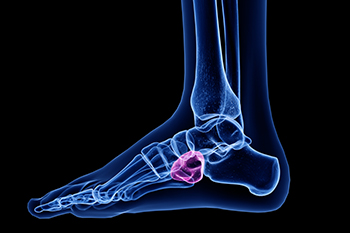

The cuboid bone is located on the outside of the foot and plays an important role in foot movement. Namely, the cuboid bone can act like a pulley during downward foot movement. However, this area of the foot is susceptible to cuboid syndrome, where the ligaments surrounding the cuboid bone become injured. Individuals that have cuboid syndrome can experience a variety of different symptoms, including limping and feelings of pain. To treat cuboid syndrome a medical professional may engage in manipulation treatment. For example, a professional may choose to perform a procedure known as the cuboid squeeze. Through this technique, an individual will have their toes pressed downward while pressure is applied to the area around the cuboid bone. This may be repeated until regular movement is regained. If you have cuboid syndrome, contact a podiatrist today. This foot specialist will be able to treat your condition and answer any questions you may have about techniques like the cuboid squeeze.
Cuboid syndrome, also known as cuboid subluxation, occurs when the joints and ligaments near the cuboid bone in the foot become torn. If you have cuboid syndrome, consult with Dr. Alan J. Spector from Shore Podiatry. Our doctor will assess your condition and provide you with quality foot and ankle treatment.
Cuboid syndrome is a common cause of lateral foot pain, which is pain on the outside of the foot. The condition may happen suddenly due to an ankle sprain, or it may develop slowly overtime from repetitive tension through the bone and surrounding structures.
Causes
The most common causes of cuboid syndrome include:
Symptoms
A common symptom of cuboid syndrome is pain along the outside of the foot which can be felt in the ankle and toes. This pain may create walking difficulties and may cause those with the condition to walk with a limp.
Diagnosis
Diagnosis of cuboid syndrome is often difficult, and it is often misdiagnosed. X-rays, MRIs and CT scans often fail to properly show the cuboid subluxation. Although there isn’t a specific test used to diagnose cuboid syndrome, your podiatrist will usually check if pain is felt while pressing firmly on the cuboid bone of your foot.
Treatment
Just as the range of causes varies widely, so do treatments. Some more common treatments are ice therapy, rest, exercise, taping, and orthotics.
If you have any questions, please feel free to contact our office located in Point Pleasant, NJ . We offer the newest diagnostic and treatment technologies for all your foot care needs.